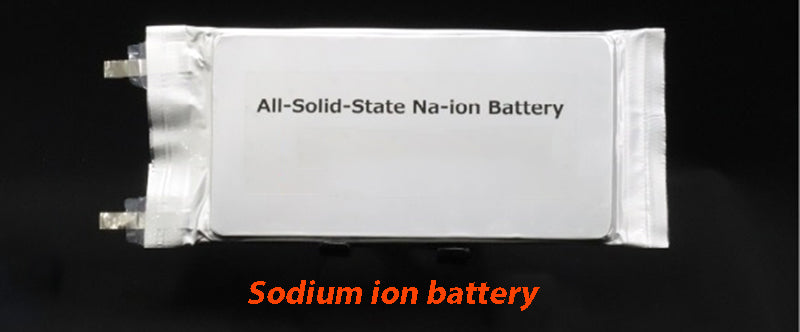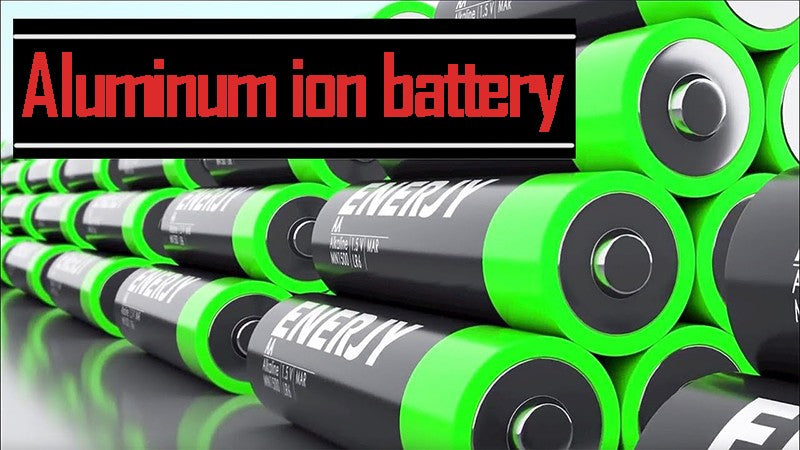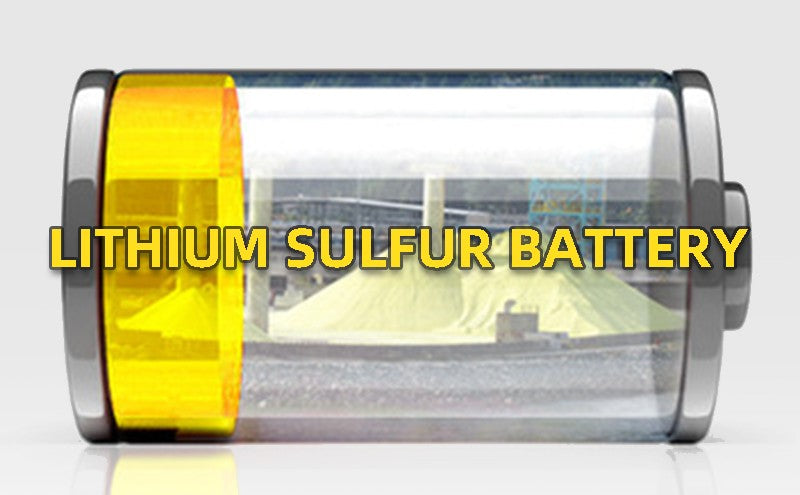
A secondary battery refers to a battery that can be recharged and reused, also known as a rechargeable battery or a storage battery. At present, lithium-ion battery technology is the most mature secondary battery technology in the market, and its cycle stability and endurance performance have been tested by the market for many years. In addition, lead-acid batteries, nickel-cadmium batteries, and nickel-hydrogen batteries are commonly used. In addition, high-temperature sodium-sulfur batteries and zinc-bromine flow batteries are often used in large-scale energy storage systems.
However, under the growing demand, people have made higher requirements on the energy density, power density and cost of lithium-ion batteries. Some researchers choose to optimize the cathode materials and anode materials of lithium-ion batteries, while some researchers choose to open a new track to develop new secondary battery, such as sodium-ion batteries, aluminum-ion batteries, lithium-sulfur batteries, etc. What are the advantages of these new secondary battery compared with the current mainstream secondary battery? Let's take a look together.
1. Sodium ion battery
As a new type of secondary battery, compared lithium vs sodium battery, the working principle of sodium-ion batteries is also very similar to that of lithium-ion batteries. During the charging process, sodium ions are extracted from the cathode material and embedded in the anode material through the electrolyte, while electrons are transferred to the anode through the external circuit to maintain charge balance.
And it's the exact opposite when discharging. Theoretically, it is possible to shorten the charging time of sodium-ion batteries to 1/5 of that of lithium-ion batteries as secondary battery. However, in order to adapt to sodium-ion batteries, the cathode material, anode material and electrolyte must be changed accordingly compared with lithium-ion batteries.

● Advantages:
The advantage of sodium-ion batteries is lower cost. Because sodium resources are more abundant than lithium, it accounts for about 2.64% of the earth's crustal elements, and the method of obtaining sodium is also very simple. Compared with the resource shortage and high price of lithium, sodium-ion batteries will have a greater cost advantage. In addition, since sodium does not react with aluminum foil, in secondary battery, sodium-ion batteries can use cheaper aluminum current collectors to reduce costs.
A bipolar sodium-ion battery can be constructed, that is, the cathode and anode materials are coated on the same aluminum foil, and the pole pieces can be periodically stacked under the isolation of a solid electrolyte. A symmetrical sodium-ion battery composed of the same electrode material can suppress the huge volume expansion of the electrode material, achieve higher voltage, greatly reduce the manufacturing cost, and enhance the stability and safety of the electrode material.
● Disadvantages:
Sodium-ion batteries in secondary battery also have relatively prominent shortcomings that need to be resolved urgently. For example, the sodium ion has a large radius, which may cause material rupture when it is deintercalated in the electrode material, thereby affecting the overall kinetic performance of the battery and electrode integrity. Compared with lithium, sodium has a higher standard electrode potential, resulting in lower energy density of sodium-ion batteries.
● Summary:
As a type of secondary battery, although the energy density of sodium-ion batteries is still not comparable to that of lithium-ion batteries, the development situation of sodium-ion battery companies in the world is still good in recent years due to cost advantages. It is very promising in some fields that do not require high energy density, as well as energy storage fields such as grid energy storage, peak shaving, wind power generation, and solar power generation. Or it will be applied in various low-speed electric vehicles, and it will complement the advantages of lithium-ion batteries.
2. Potassium ion battery
In recent years, potassium ion batteries as a new secondary battery have also begun to attract attention. Potassium, which is in the same main group as lithium and sodium, is also one of the alkali metals. Like sodium, it has a wide range of sources and abundant reserves, and its physical and chemical properties are also very similar to lithium and sodium as secondary battery.

● Advantages:
Compared with sodium element, the standard equilibrium potential of K/K+ (-2.93V) is closer to that of Li/Li+ (-3.04V), and lower than that of Na/Na+ (-2.72V). This makes potassium-ion batteries as new secondary battery have potential advantages over sodium-ion batteries in terms of output voltage and energy density. In addition, because the Lewis acidity of K+ is weaker than that of Li+ and Na+, K+ is not easy to combine with anions in the electrolyte, so it tends to have a faster migration rate, which may promote potassium-ion batteries to exhibit more excellent rate performance. In addition, potassium does not form an alloy with aluminum, so cheaper aluminum foil can also be used as the cathode and anode current collectors.
● Disadvantages:
However, compared other secondary battery, potassium ions have a relatively large ionic radius, which makes their migration in electrode materials more hindered. Due to the insufficient layer spacing of graphite materials, it cannot satisfy the fast migration of lithium ions even in lithium-ion batteries. Therefore, for potassium ions with a larger ionic radius, the graphite anode obviously cannot provide a large enough migration channel. Studies have shown that only when the graphitic carbon interlayer spacing is extended to more than 0.38nm, it is possible to make the migration of potassium ions in it possible.
● Summary:
The key to improving the energy density of potassium-ion batteries in secondary battery and promoting their applications is to develop high-rate anode materials for potassium-ion batteries.
3. Aluminum ion battery
As a new secondary battery, aluminum-ion batteries are also a hot spot for researchers at present. It is a new type of electrochemical energy storage device that uses metal aluminum as the counter electrode and aluminum salt ionic liquid solution as the electrolyte. It has the advantages of abundant resources, low cost and high safety. Aluminum has been an attractive potential electrode material due to its low cost, nonflammability, and high charge storage capacity.

● Progression:
While researchers have been hoping to develop commercially viable aluminum-ion batteries as secondary battery for the past few decades, there appears to be no successful commercialization so far. At present, the cathode material is the most concerned in aluminum-ion batteries. In view of its relatively high discharge voltage platform, it is potential to increase the specific capacity of carbon materials through various methods to increase the energy density of carbon-based aluminum-ion batteries.
According to the current research results, increasing the specific surface area of carbon materials, doping with non-metallic elements and reducing the order of intercalated graphite materials can effectively increase the specific capacity of carbon materials. The anode is the best choice to directly use metal aluminum, which is due to the high theoretical specific capacity, safety and low cost of metal aluminum. However, the aluminum anode still needs further optimization, such as the modification of the surface interface and the porosity of the bulk phase.
● Summary:
The industry believes that aluminum-ion batteries, as a new type of secondary battery, still have a lot of room for development, but this requires optimization of each part of the battery to be able to compete with lithium-ion secondary battery.
4. Lithium sulfur battery
Lithium sulfur battery is a new type of secondary battery, which uses elemental sulfur as the cathode and metallic lithium as the anode. It is a very promising lithium metal battery. The reaction mechanism of lithium-sulfur batteries is different from the ion deintercalation mechanism of lithium-ion batteries, which is an electrochemical mechanism.
Lithium-sulfur batteries use sulfur as the cathode reactant and lithium as the anode. During discharge, the anode reaction is that lithium loses electrons and becomes lithium ions, and the cathode reaction is that sulfur reacts with lithium ions and electrons to form sulfide. The potential difference between the cathode and anode reaction is the discharge voltage provided by the lithium-sulfur battery in secondary battery.

● Advantages:
As a new secondary battery, lithium-sulfur batteries have high energy density, and the theoretical specific capacity can reach 1675mAh g-1, which is much higher than the lithium-ion battery capacity (<200mAhg-1) widely used at present with lithium cobalt oxide as the cathode. Elemental sulfur is very friendly to the environment, almost no pollution, and more environmentally friendly. And it is rich in the earth's crust, far exceeding the rare metals cobalt, manganese and nickel, and its cost is low, so it has great development prospects in energy storage.
● Disadvantages:
There are currently three main problems with lithium-sulfur batteries:
- Sulfur is easy to react with the electrolyte to produce polysulfide compounds, and polysulfides are easily soluble in the electrolyte, resulting in the loss of active sulfur;
- The poor conductivity of positive sulfur seriously hinders the electron transfer process, which is not conducive to the high rate performance of the battery;
- The volume of sulfur changes greatly during charging and discharging, which may cause the shedding of active materials and damage to the battery.
● Summary:
If lithium-sulfur batteries as secondary battery are to be commercialized, the above problems need to be resolved as soon as possible. At present, the industry believes that the development and preparation of new sulfur cathode materials will be one of the effective ways to realize high-efficiency energy storage lithium-sulfur batteries.
Relater articles: lithium vs alkaline batteries, rechargeable batteries vs alkaline
















